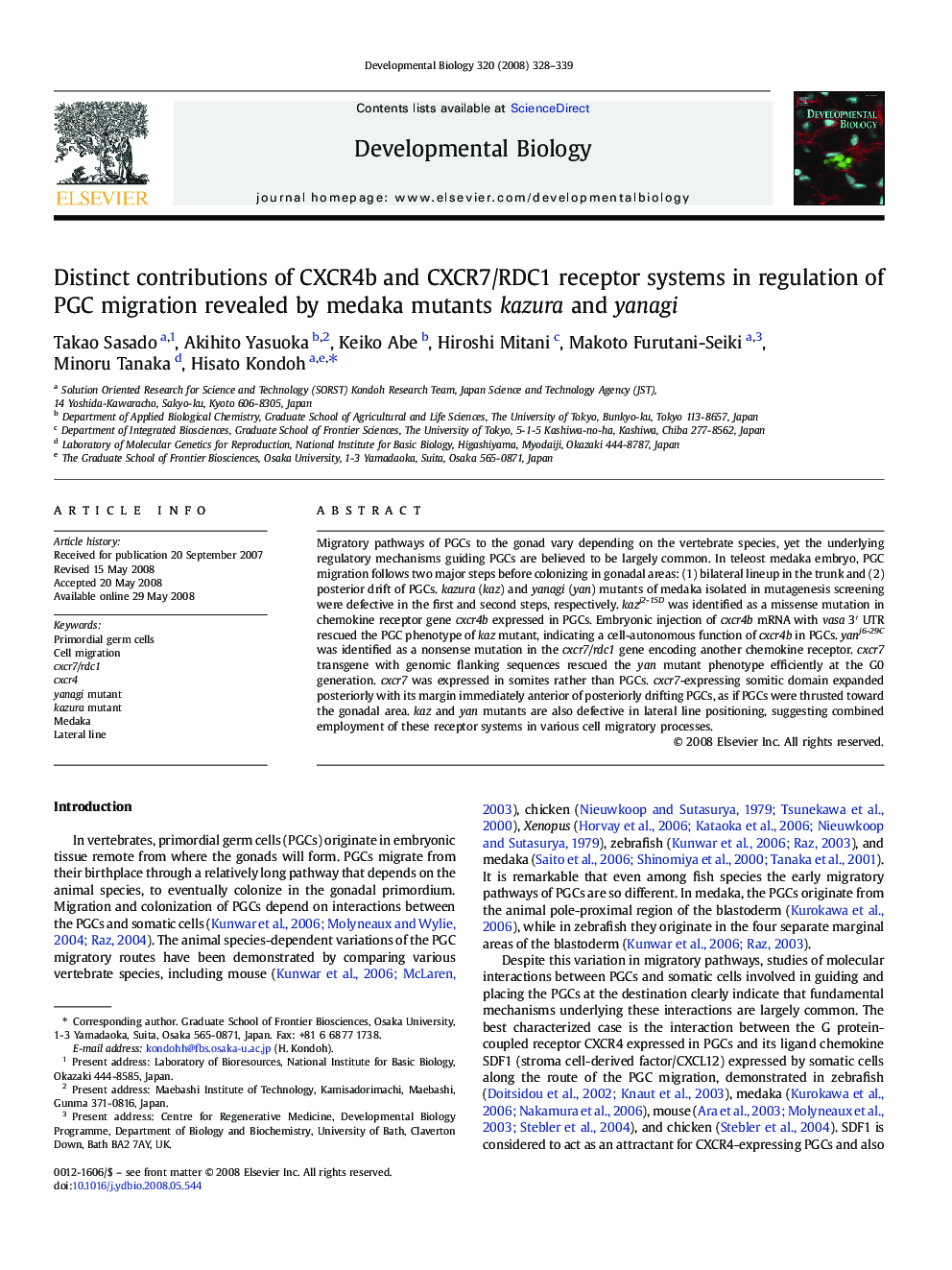| Article ID | Journal | Published Year | Pages | File Type |
|---|---|---|---|---|
| 2174494 | Developmental Biology | 2008 | 12 Pages |
Migratory pathways of PGCs to the gonad vary depending on the vertebrate species, yet the underlying regulatory mechanisms guiding PGCs are believed to be largely common. In teleost medaka embryo, PGC migration follows two major steps before colonizing in gonadal areas: (1) bilateral lineup in the trunk and (2) posterior drift of PGCs. kazura (kaz) and yanagi (yan) mutants of medaka isolated in mutagenesis screening were defective in the first and second steps, respectively. kazj2-15D was identified as a missense mutation in chemokine receptor gene cxcr4b expressed in PGCs. Embryonic injection of cxcr4b mRNA with vasa 3′ UTR rescued the PGC phenotype of kaz mutant, indicating a cell-autonomous function of cxcr4b in PGCs. yanj6-29C was identified as a nonsense mutation in the cxcr7/rdc1 gene encoding another chemokine receptor. cxcr7 transgene with genomic flanking sequences rescued the yan mutant phenotype efficiently at the G0 generation. cxcr7 was expressed in somites rather than PGCs. cxcr7-expressing somitic domain expanded posteriorly with its margin immediately anterior of posteriorly drifting PGCs, as if PGCs were thrusted toward the gonadal area. kaz and yan mutants are also defective in lateral line positioning, suggesting combined employment of these receptor systems in various cell migratory processes.
